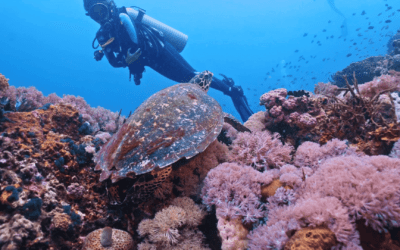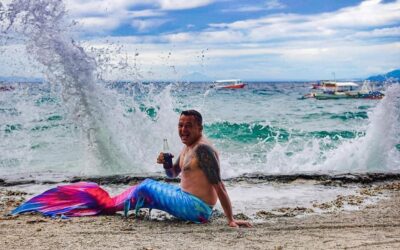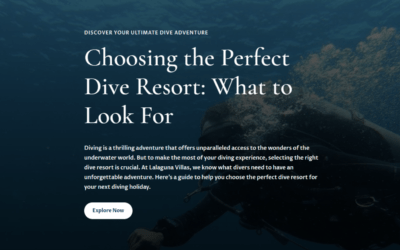Marine life of Puerto Galera: Starfish
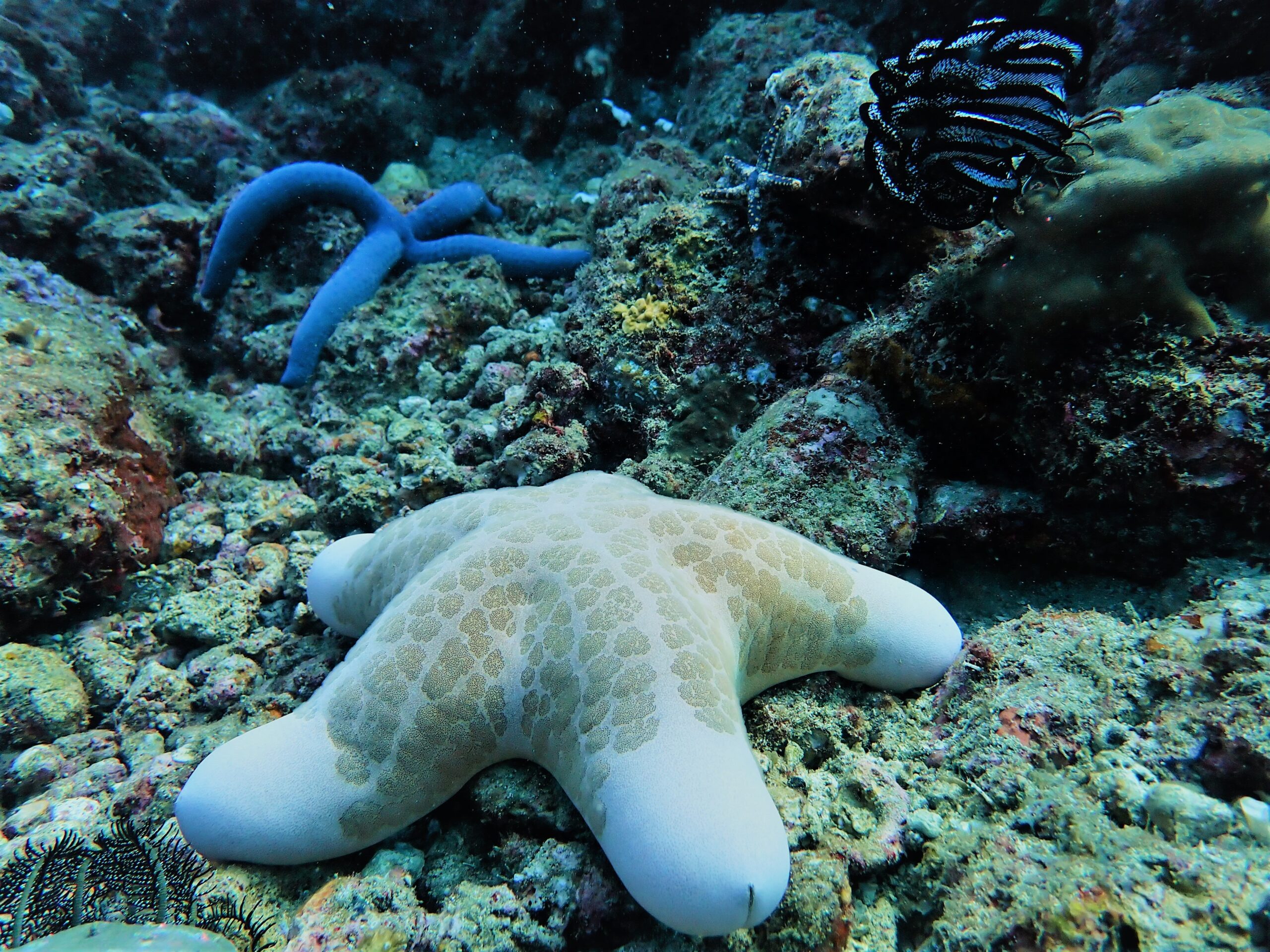
For most divers the greatest joy of being able to explore the underwater world is the feeling of being transported to an alien world teeming with unfamiliar life. One of the reasons Puerto Galera in the Philippines is considered one of the best dive locations in the world is the sheer abundance of marine life to meet.
The waters of Puerto Galera are home to countless varieties of colourful tropical fish, inquisitive sea turtles, quick-moving stingrays and foreboding thresher sharks, but just as varied and interesting is the wide variety of plant and invertebrate species which make their home here in the “coral triangle”.
In this blog we will introduce just a single family: the starfish, which can range in size from smaller than your fingernail to larger than your arm in these warm Indo-Pacific waters.
In the photograph above, taken at the Sinandigan Wall dive site just a six minute speedboat ride from Lalaguna Villas, you can see a big chonky granulated sea star measuring over a foot across take centre stage, with a blue sea star making its way over the rocks in the top left and a delicate necklace starfish clambering upwards at centre-right. A crinoid or feather star (which will be the subject of a different blog post) perches on a coral in the top right.
Granulated sea star or cushion star
The granulated sea star or choriaster granulatus has many nicknames: cushion sea star, doughboy star, or big-plated sea star, as well as other names which make reference to its distinctive plump shape.
The only species in the genus Choriaster, this uniquely puffy starfish is found in shallow tropical waters on coral reefs and rubble slopes.
It feeds on algae, coral polyps, and dead animals, and prefers water temperatures of around 23C to 29C (74 to 84 degrees Fahrenheit). They are found in abundance in Puerto Galera’s dive sites.
Necklace starfish
Recognisable by its delicate jewel-like patterns radiating out from the centre, and found in a variety of colours (most commonly red and ivory, unlike the blue-and-ivory specimen here), the necklace starfish (Fromia monilis) is found in shallow waters of the Indian and western Pacific Ocean.
The one pictured right looks like the leg at the bottom of the photograph is shorter than the others: like most starfish the species can regenerate lost limbs and it is not uncommon to see these creatures sporting one limb shorter than the others as it is in the process of regrowing.
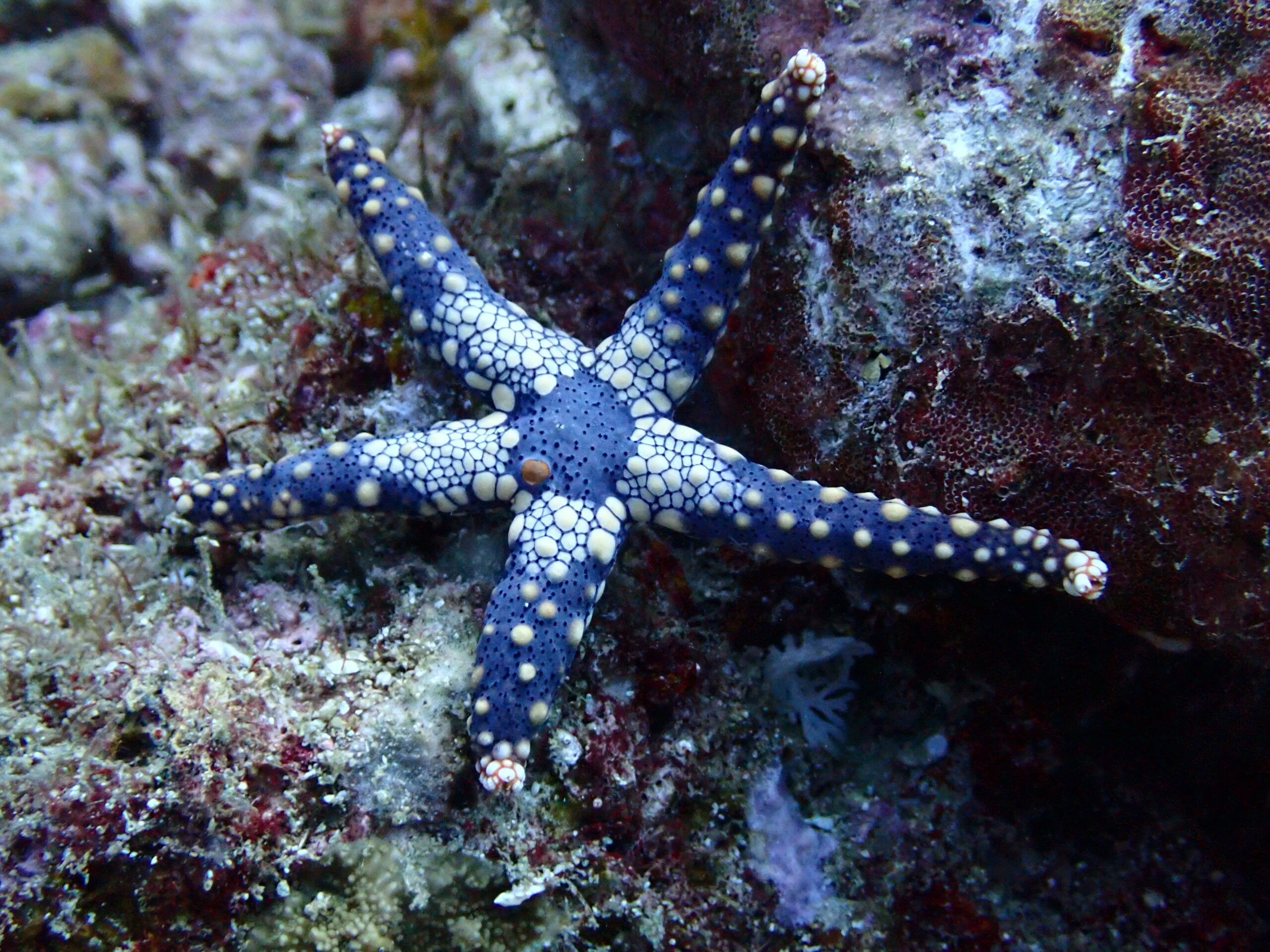
The necklace starfish feeds on sponges and small invertebrates. This specimen is approximately four inches across but they can grow as large as 12 inches across.
Red individuals are also often called the red tile starfish, and there are eleven closely related fromia species which display differennt markings and colours.
Unfortunately, this sea star is also found in many an at-home saltwater aquaria which is not good, since it subsists exclusively on red sponges and most aquariums cannot provide that – such starfish usually die of starvation within a year of capture. Remember the PADI motto: leave only bubbles, take only photographs.
The blue sea star
Blue sea stars (linckia laevigata) can be seen over many of the rocks and corals which fill the dive sites of Puerto Galera, usually in shallow and sunny parts of reefs and reef fringes.
It is a scavenger, feeding on dead animals. As with many sea stars, their mouth is on the underside of their body, but prey is absorbed outside their mouths by forcing out their digestive organs from their stomach.
They move at the slow pace characteristic of all sea stars and starfish but if you have patience you will see them cover small but appreciable distances of an inch or so every few minutes if you care to wait and watch.
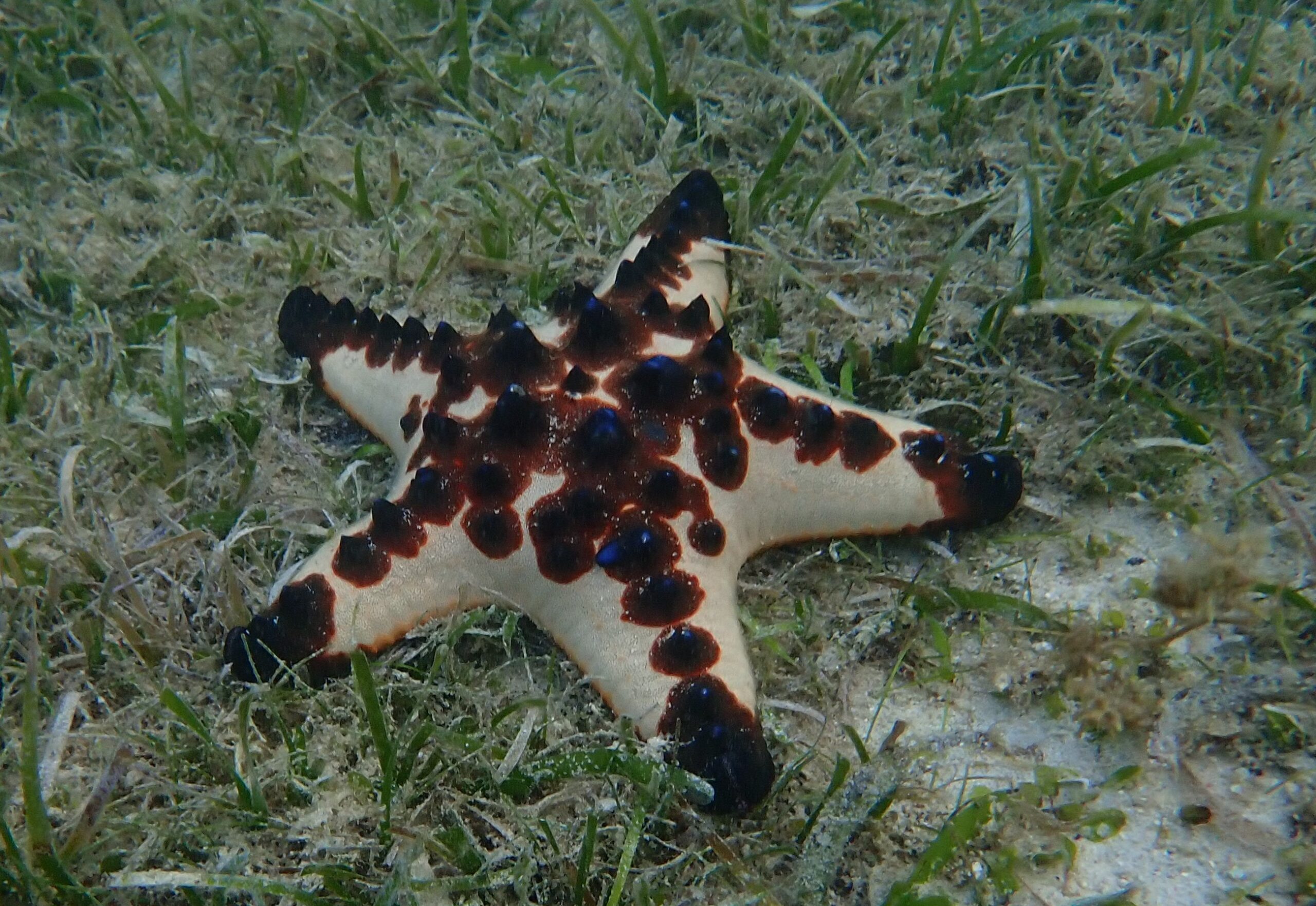
Chocolate chip sea star
A beautiful example of the strangeness of life in the underwater world which we can visit with our scuba gear on, this creature has no eyes, five arms, twenty or so horns and hundreds of tiny tubular “feet”.
Delightfully nicknamed the chocolate chip sea star, the pointy red/brown horns or spikes which to some people resemble chocolate chips in a cookie are actually a warning to the creature’s would-be predators.
As a result, this sea star starfish provides protection to other species including shrimp, brittle stars, and juvenile filefish that live on its surface.
They eat sponges and other detritus and are often found on coral reefs. Around Puerto Galera they are most commonly found in areas of sea grass, and communities of dozens or more are to be seen grazing in Sabang Bay to greet arrivals to the Sabang Wrecks dive site.
The little feet on their underside function for locomotion, feeding, and respiration. They are arranged in grooves along the arms and operating through hydraulic pressure pass food to the mouth at the centre.

